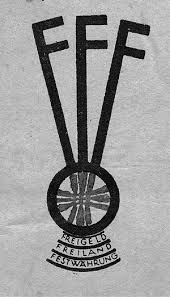The wonders of Google. If you do enough digging on a search engine combining different theories, you can find an ideology for almost anything. Results for the search “Fabian Anarchism” came up with some examples such as how some consider Marx one because he has a program of a “dictatorship of the proletariat” with the end goal of anarchist communism. Horr’s essay was another such result.
This essay is short, and is mostly a praise of a model of anarchism and libertarian socialism in practice. Writing in 1911, Horr recounts the theories set forth thus far for an anarchist society: individualism, egoism, mutualism, communism, and a contemporary organization he formed known as “Freeland,” inspired by the views of anarchist economist Theodore Hertzka (whose economics are similar to the Freiwirtschaft economist Silvio Gesell). Horr begins by praising well-known anarchist Benjamin Tucker, whose influence on the social and economic views espoused in this essay is obvious. He begins with a short manifesto of what “Fabian Anarchism” is, outlining a gradual model relying on “the penetrative forces resulting from the steady and regular blow delivered continuously at the weakest and most vulnerable point in the citadel of our foes.”
Horr takes issue with Marx’s views of political economy, despite claiming “We may take it for granted that there is a physical base underlying all social phenomena.” From this basis, Horr indicates that economic, political, and social institutions coming into being have a reason for existing because of the impassioned and psychological nature of man, and not “the prevailing mode of economic production and exchange.” From this, it can be deduced that he is posturing a position that is cautious of some revolutionary tactics espoused by orthodox Marxism and anarchism; hence the “Fabian” descriptor (probably derived from the “Fabian Society”).
On the surface, this is a promising exposition to a theoretical framework that has been somewhat forgotten on the modern left. However, perhaps he takes way too much influence from a school of thought assuming “inherent human selfishness” and a “human nature” of instant gratification. He says “their activities may operate within the limits of Stirner’s daring neo-ethical deduction, that “nothing is more important to me than myself.” He does not indicate what ways people are selfish, just that they are. There were a few social problems that he could have chosen from at his time, such as the increasing time away from home that workers had to spend in their workplaces for low wages, the increasing use of alcohol as a coping mechanism, and/or the fact that large private corporations were gaining increasing legal regulatory capture, preventing competition and the existence of some of the very organizations that he is advocating.
What to make of the model that Horr proposes? Well, he wanted to find a city (Los Angeles is one example) and turn it into a cooperative community where the populace at large directly elects the workers and the workers are compensated in money while the loans made were made at or near 0% interest. If a member of the community did not want to participate in the main frame of the community’s economy, they still had the option of operating while paying a tax to the community for the value of the site they operated on (this is similar to Henry George’s and other enlightenment philosophers’ support for a ground rental/land value tax). I see this as a favorable alternative to capitalism that still maintains markets and simplifies local taxation. My only quarrel is that enterprises in the community should elect their own workers, while the community at large should instead focus on electing their representatives and/or deciding on issues that directly affect them. It is obvious that Horr wanted a gradual transition to a stateless society. Nowadays, there are a number of other factors to consider though. Los Angeles’ demographic has drastically changed since the time he wrote this. Also, forming a cooperative on a large scale like this is considerably harder because of regulations to starting an enterprise of any type on the local, state, and federal level. Not to mention the laws that favor large, hierarchical corporations. There has been much talk of developing stable-priced, local mutual curriencies since this essay, and it’s context in the developing cryptocurrency market is something that needs to be further developed. Nevertheless, I feel this essay is an interesting missing piece of anarchist and socialist history.
What does this mean to us nowadays? Horr offers a vision of a society based on many institutions that still exist alongside our conventional institutions: cooperatives, employee-owned companies, community land trusts, credit unions, local currencies, crypto, mutual credit and community banks. What would it take to scale up these institutions to make them more prevalent in our society? All of these are fair game in a competitive market environment!

This post has received gratitude of 1.00 % from @jout
Downvoting a post can decrease pending rewards and make it less visible. Common reasons:
Submit
You got a 0.27% upvote from @postpromoter courtesy of @jout!
Downvoting a post can decrease pending rewards and make it less visible. Common reasons:
Submit